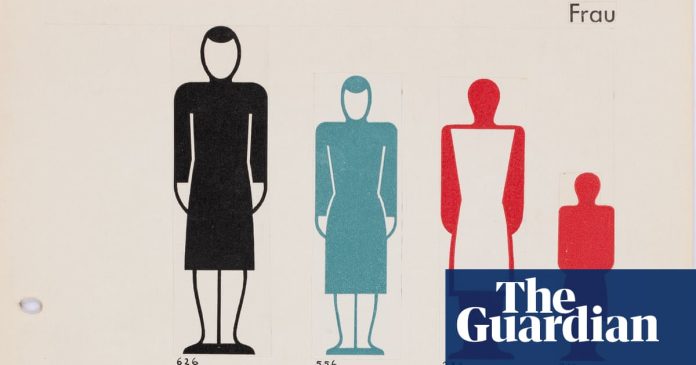When Otto Neurath died in Oxford some 80 years ago, far away from his native Vienna, he was still finding his feet in exile. Like many a Jewish refugee, the economist, philosopher and sociologist had been interned as a suspected enemy alien on the Isle of Man, along with his third wife and close collaborator Marie Reidemeister, having chanced a last-minute life-saving escape from their interim hideout in the Netherlands across the Channel in a rickety boat in 1940.
Thanks to Neurath’s pioneering use of pictorial statistics – or “Isotypes” as Reidemeister called them, an acronym for “International System of Typographic Picture Education” – he left behind an enormous legacy in the arts and social sciences: it is the language through which we decode and analyse the modern world. But his lasting relevance would have been hard to predict at the time of his death at the age of 63.
At that point, his Vienna Method of Pictorial Statistics had had relatively little impact in the UK (beyond providing strikingly simplified imagery to the public information shorts of leftist film-maker Paul Rotha). Neurath’s “visual autobiography” had been shelved by his publishers, who probably failed to follow the ambitious arc of its title, “From Hieroglyphics to Isotype”.
Suggesting a civilisational peak being reached in his own creation, this tome – which remained unpublished until 2010 – outlined his democratising vision for a way to overcome educational class divides, as crystallised in the slogan: “Words divide, pictures unite”.
This harked back to the socialist spirit of interwar “Red Vienna”, ill at ease with the shamelessly profit-driven orientation of capitalist postwar Anglo-American pop culture. Yet Neurath’s enthusiasm for modern methods of reproduction corresponded to the nature of pop as mass-manufactured art without a unique original. And just as advertising slogans or pop songs are angling for instant appeal, Neurath also demanded images that “show the most important thing about the object at first glance”.
In retrospect, his thoughtful semiotics anticipated much of pop art. Just as pop music follows hedonistic principles, Neurath’s aims went far beyond the utilitarian. As one of the linchpins of Vienna’s social housing programme, he placed “happiness” above the practical advantages of typification and standardisation, infuriating purists with his statement that “the optimal technical solution by no means always coincides with the greatest happiness.” At the same time, Neurath was enamoured with new technology, championing fellow exile Wolja Saraga’s Saraga-Generator – an early electronic instrument akin to the theremin but controlled by light – and predicting the creation of an artificial “Isotype voice” for future documentary films.
It makes a lot of sense, then, that in 2017 the UK synthpop duo Orchestral Manoeuvres in the Dark – who utilised the unlikely charm of synthesised speech as far back as the 1983 album Dazzle Ships – would release a track called Isotype. The song was intended to celebrate Neurath’s “fucking genius”, as their singer and lyricist Andy McCluskey puts it, speaking to me from his home on the Wirral. Both he and Peter Saville, the graphic designer who notably fashioned the aesthetics of OMD’s early albums as well as the corporate identity of the Manchester label Factory Records (Joy Division, New Order, etc) came across Neurath’s method back in the early 1980s.
To them, the de-ornamentalised style of Isotype – mostly designed by Neurath’s favoured artist Gerd Arntz – seemed to perfectly pre-empt the graphic asceticism of the post-punk era. “We liked the idea of reducing things to the minimum and still getting the point across,” says McCluskey. “We had both grown up with Kraftwerk’s Autobahn album, which in its later guise was the simple Isotype of the autobahn sign with the two highways and the bridge on a blue background. So these were the frames of reference which go back decades.”
However, there is some ambivalence to McCluskey’s admiration of Neurath’s proto-pop imagery. “What kind of worried me was one of Otto Neurath’s phrases: ‘To remember simple pictures is better than to forget accurate figures,’” he says. “Originally that would have been a mantra that I adored. But it’s also a scary predictor of the world we live in now, in terms of soundbites and our limited capacity to understand. Doesn’t it sound like Donald Trump’s whole political mantra?”
The video for OMD’s Neurath tribute is a moving mandala of isotypes created by German artist Henning M Lederer, and takes pride of place in Wissen für alle: Isotype (“Knowledge for all”), a newly opened exhibition on Neurath’s work and legacy in Wien Museum, the recently and beautifully expanded mid-century-style Museum of the City of Vienna on Karlsplatz, bang in the middle of the Austrian capital.
Featuring lots of yellowed original posters designed for Neurath’s mass-reproducable “museums of the future”, it is a compact but effective display brimming with the socialist utopian energy that would have coursed through the streets of Vienna in those heady days before the arrival of first Austro-fascism, then the Nazi regime. But what might have seemed like mere nostalgia a few years ago now feels like a rediscovered manual for resistance; a useful reminder of how leftwing politics tackled the challenge to overcome intellectual snobbery, striving to make itself understood.






